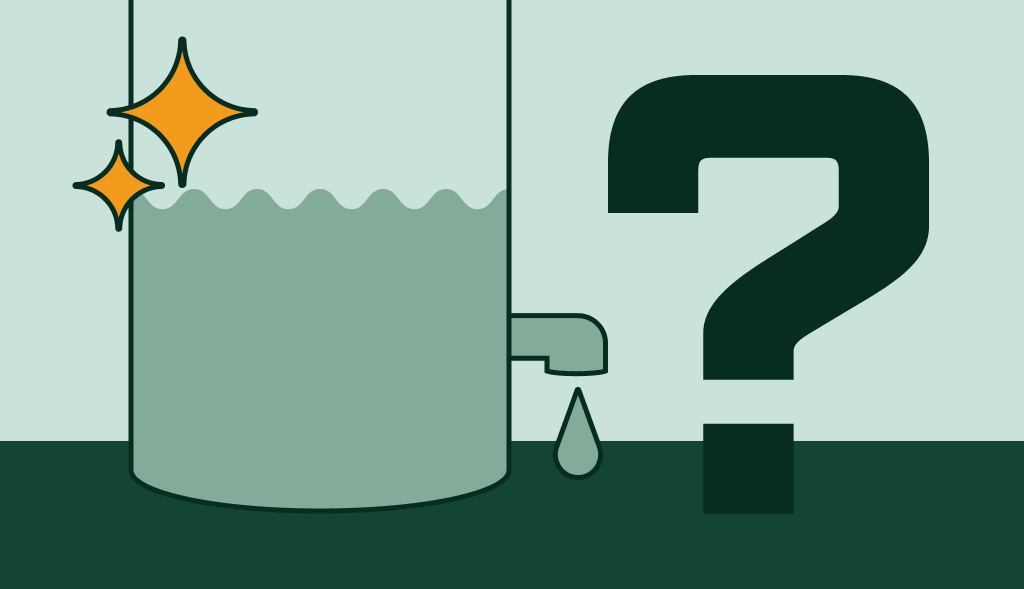How Long to Run Water After New Water Heater Installation?

Installing a new hot water heater is a big event, bringing the joy of cozy baths, efficient laundry, and easy dishwashing.
However, one of the most common questions that homeowners ask after installing a new water heater is: “How long should I run water after the installation?”
This article gives a complete guide on when to use water after installing various water heaters, like gas and tankless models.
Understanding the Types of Water Heaters
Before we delve into the specifics, let’s understand the differences between the main types of water heaters and how they heat water.
Gas Water Heaters
A gas water heater is one of the most common types of water heaters. They heat water using natural gas or propane, and they have a tank which stores hot water.
Electric Water Heaters
Electric water heaters work almost the same as gas tank water heaters. Instead of using gas, they use electricity to heat the water.
It may sound complicated, but in reality, the operation of an electric water heater is quite simple, once you understand the principle of stratification. Under pressure, cold water enters either through the side, base or top of the tank.
It is then heated by the elements, and since the density of the hot water is lower than the one of the cold water, it rises to the top of the tank. Hot and cold water do not mix, creating “strata”.
Tankless Water Heaters
Unlike traditional tank style water heaters, tankless water heaters heat water directly without the use of a storage tank. When you turn on the hot water tap, cold water enters the unit.
The cold water is then heated by either a gas burner or an electric element. They are also called hot water on demand as they do not store the heater water. Therefore, they are more economical in terms of energy.
Running Water After Installing a New Water Heater
Whether your water heater uses gas or electricity, the process of filling and running water after the installation is similar.
Filling the Tank
After your new water heater is in place, the first step is to fill the water tank. Turn on the cold water supply to the heater, allowing water in the tank to rise to the top. For tankless water heaters, there isn’t a storage tank, so you can turn on the water supply right away.
Running the Water
Once filled, it’s time to start heating water. Turn on the power or gas supply to your water heater, and wait for the water to heat up. During this heating period, the unit starts the water heater recovery process, and warms the fresh supply of cold water.
For tank-style water heaters, it typically takes about an hour for the water to heat. It always depends on the size of the tank and whether it’s a gas or electric model. Gas water heaters usually heat water faster than electric models, so they may take less time.
For a tankless water heater, it heats the water immediately as it flows through the unit.
Once heated, turn on the hot water tap in your home and let it run. The initial discharge of water may carry sediment, dust, or air pockets that collected in the lines during the installation process. Allow the water to run until it flows clear and free of any air bubbles. This process should take around 5 to 10 minutes.
After Running the Water: What’s Next?
After you have run the water and ensured all the lines are clear, you can start using your new water heater normally.
Monitor Your Water Heater
Keep an eye on your water heater during the first few days after installation. Check for any leaks or anything unusual. If you notice that your water takes longer to heat than expected, contact your installer or a professional plumber. The manufacturer might have wrongly fitted or installed the water connections.
Regular Maintenance
Proper maintenance can extend your water heater’s lifespan and keep it running efficiently. This includes periodically draining the tank to remove sediment, checking the pressure relief valve, and inspecting the anode rod.
Installing a new water heater is a significant investment in your home’s comfort and functionality. Knowing how long to run the water after your new water heater installation is a key part of this process. By following the steps outlined in this guide, you can ensure a smooth transition to your new appliance.
Enhancing Your Water Heater’s Lifespan With A Powered Anode Rod
Why Consider Corro-Protec for Your New Water Heater
When buying a new water heater, it’s smart to take measures to protect and make it last longer. One of the most effective methods of achieving this is through the installation of a Corro-Protec powered anode rod.
Corro-Protec anode rods actively combat the corrosion process that traditionally reduces a water heater’s lifespan. The Corro-Protec powered anode protects the tank for a long time without deteriorating, unlike regular sacrificial anodes.
Installing a Corro-Protec anode rod has several benefits. It helps your water heater last longer and work better. Additionally, it prevents problems such as bad smells or air in the hot water.
By incorporating a Corro-Protec powered anode into your new water heater installation, you’re safeguarding your investment and ensuring the optimal performance and durability of your new appliance.
This proactive approach will provide peace of mind and hot water reliability for years to come.
DISCLAIMER: The information provided is for general DIY guidance on water heater maintenance and does not replace professional advice or service. Risks include electric shocks, burns, and property damage. Prioritize safety, follow manufacturer’s guidelines, and consult with professionals if unsure. Comply with local laws and obtain necessary permits. Use this information at your own risk; the provider assumes no liability for any injuries or damages. If in doubt, hire a professional.
Blog
Water Heater Recirculating Pump : Why And How Does It Work?
What is a Hot Water Recirculating Pump and How Does It Benefit Your Home? Every homeowner knows the inconvenience of waiting for hot water to […]
Troubleshooting: Why Your Hot Water Heater Is Not Working
When you want a warm bath or shower but only get cold water, it can be really annoying. If your hot water heater isn’t working, […]

